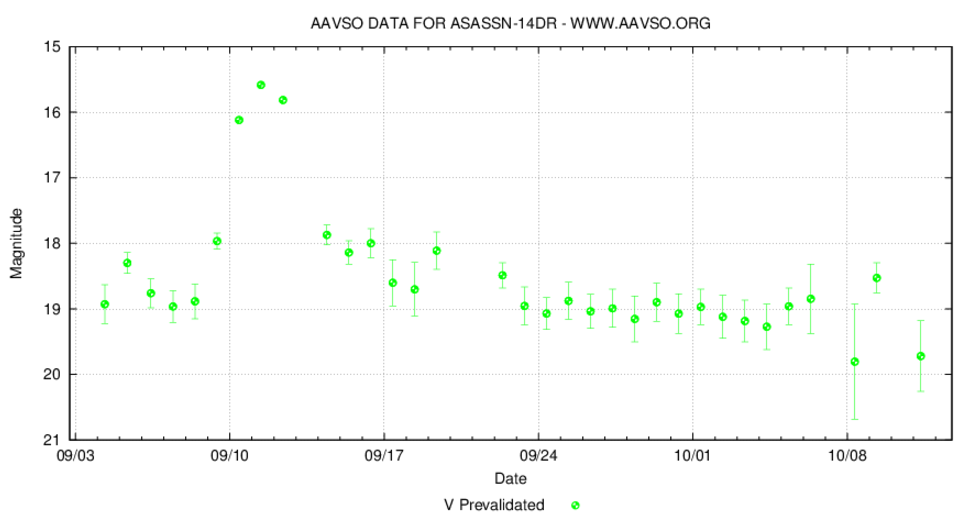I am working on a project looking at these CVs: ASASSN-14dr, ASASSN-14gl, and CSS 091220:003204+314510. I am the using the remote telescope iT024 that's part of the iTelescope network. I've been fortunate enough to catch all 3 targets in outburst relatively quickly. Here's ASASSN-14dr:

Because I want to cover about 60 days and since I'm paying for telescope time, I limited the exposure time to 3 minutes nightly so I could minimally see if the target was in outburst or not. Consequently, the error bars are quite large during the normal orbital phase. However, between 9/24 and 10/6 there appears to be a slight periodic modulation of the light curve. Is this just noise, or is this the reflection effect, the slow, smooth modulation during the orbital phase due to one side of the red dwarf absorbing and re-emitting radiation from the white dwarf? If it is in fact the reflection effect, would the period of this modulation be equivalent to the orbital period? Just for fun I did a period search using VSTAR and got this:

Obviously, I don't have enough data points, but I am just curious if this a valid way of looking for the orbital period, or if you have to measure from eclipse to eclipse.
Thanks,
Blake


